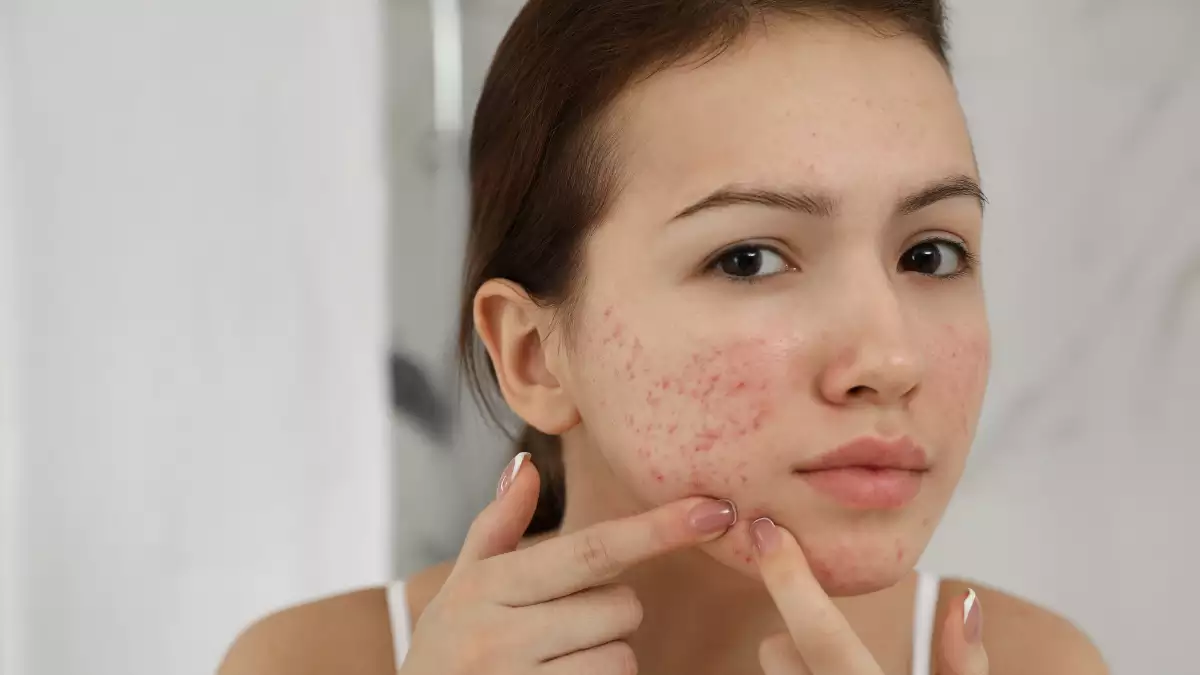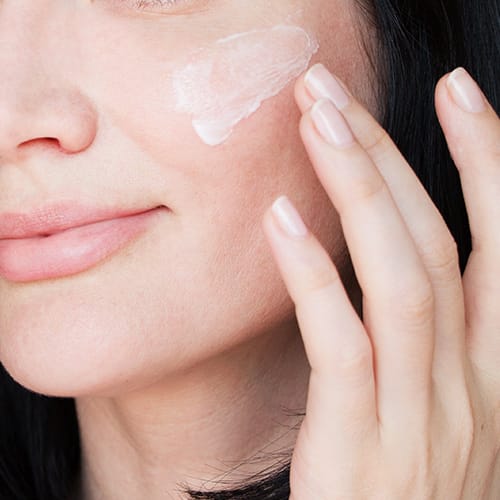The most common skin disease for adolescent boys and girls is acne. Acne is produced as a result of androgenic stimulation of the sebaceous follicles on the face and neck, producing sebum. These follicles can become colonized by bacteria and yeast, leading to the formation of comedones. Bacterial lipases produce fatty acids that can irritate follicular ducts, causing hyperkeratosis and potentially leading to inflammation if the comedones rupture into the dermis.
Topically, the main treatments used are Benzoyl Peroxide, Retinoic Acid, Adapalene, topical antibiotics, and Azelaic Acid.
Benzoyl peroxide
Benzoyl peroxide is widely used for acne as it is active against Propionibacterium acnes. It gradually releases oxygen in the presence of water, killing bacteria. However, it can cause mild irritation, a burning sensation, and stinging. Benzoyl Peroxide can bleach hair and colored fabric and may lead to tolerance development. It should not come into contact with the eyes, lips, or mucous membranes. Side effects include skin dryness, scaling, erythema, and contact sensitization.
Retinoic acid
Retinoic acid is a potent comedolytic. It promotes the lysis of keratinocytes and prevents the buildup of horny cells. Retinoic acid lacks antibacterial action but is highly effective, with results visible in 6 to 10 weeks. Tretinoin, a form of retinoic acid, can be irritating to the skin, so it’s advised to start with a low concentration and gradually increase it. Common side effects include redness, edema, and crusting. Tretinoin is typically used in concentrations of 0.025% to 0.05% in gel or cream form. It can be alternated with Benzoyl Peroxide, with Benzoyl Peroxide applied in the morning and Tretinoin at night. Tretinoin also helps prevent photoaging of the skin, reducing issues like dry, scaly surfaces, wrinkles, and rough textures. Long-term therapy is not recommended.
Adapalene
Adapalene is a synthetic tretinoin-like drug that exerts anti-inflammatory effects. It is generally less irritating than tretinoin.
Topical Antibiotics
Topical antibiotics, such as clindamycin, erythromycin, and tetracyclines, are less effective than benzoyl peroxide but are non-irritating to the skin.
Azelaic acid
Azelaic acid is a natural product derived from Pityrosporum ovale. It’s used in cream form at concentrations of 10% or 20%. Its effects may take more time to become evident, and it’s effective against conditions like melasma.
These topical agents are commonly used for acne treatment. Long-term use of the same medication is not recommended. The concentration of these medicines is crucial, as improper concentrations can worsen acne and damage the skin.


